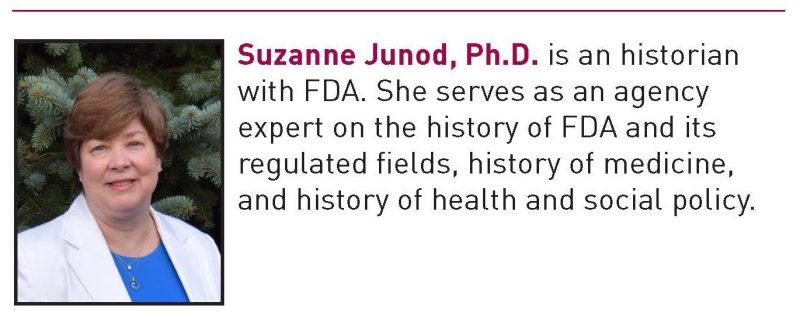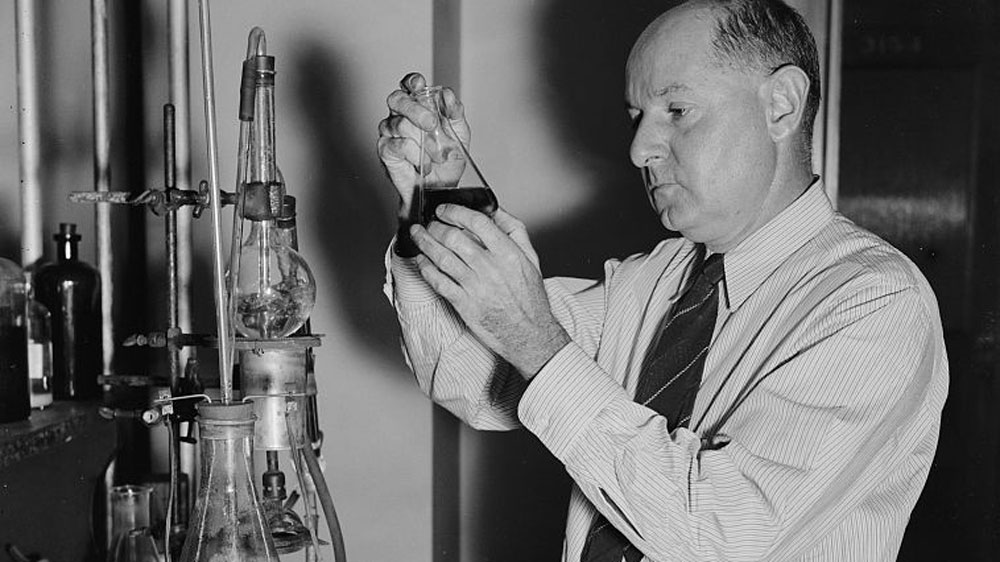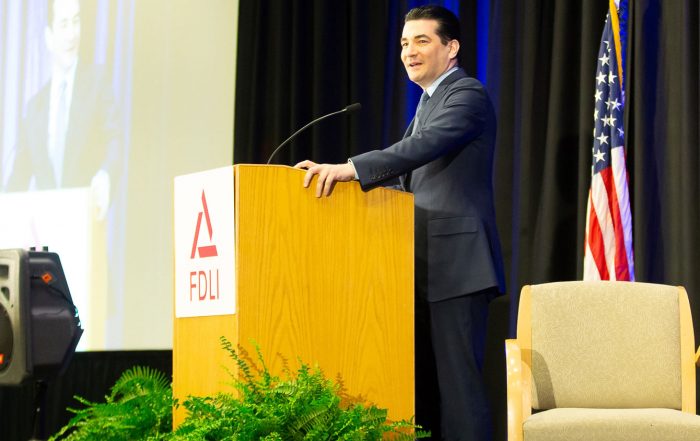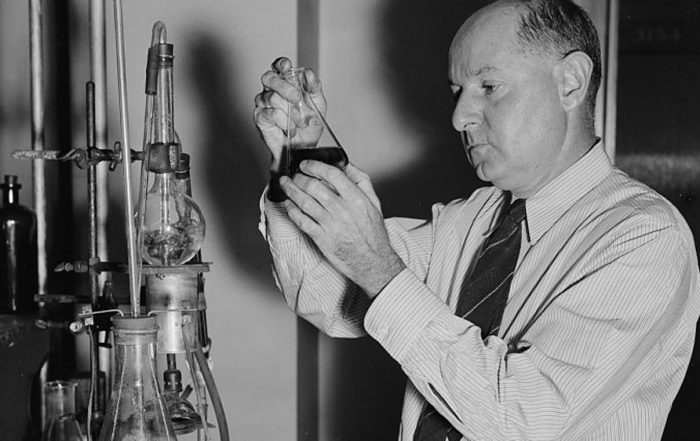Commemorating the 80th anniversary of the Passage of the 1938 Food, Drug, and Cosmetic Act
May 3, 2018 Luncheon Address
By Suzanne Junod
Harvey Washington Wiley, the “crusading chemist,” often referred to as the “father” of the original 1906 Pure Food and Drugs Act, had a vision for the Bureau of Chemistry after the law was enacted. In Wiley’s regulatory worldview, the heroes would be the chemists, whose scientific expertise was quite impressive for its day. The chemists, Wiley believed, would be the ones identifying violations by testing products. Adulteration and misbranding violations discovered and documented by the chemists would simply be explained to the offenders, whether individual or company, and they would mend their ways and start putting out pure products. Aside from a few rare occasions, there would be no need for lawyers. Wiley also saw no need for federal inspectors. Couldn’t USDA just deputize local inspectors? Congress, however, did not agree and the law established a cadre of federal food and drug inspectors—but without the police powers of most state inspectors. One Congressman, in fact, accused the 1906 law of being nothing but a “Trojan horse, with a bellyful of inspectors.” When the first inspectors reported for duty after the law had been enacted, Wiley was overheard saying that he “did not know what to do with them”—except that his language was much more colorful! He thought they would function as “sample grabbers” and they were given mesh shopping bags and sent out into the marketplace. They reportedly ditched the bags under a park bench and began developing a more professional role for themselves.
Things didn’t exactly work out according to Wiley’s vision. Lawyers, trade associations, and manufacturing organizations began to play a larger role than Wiley had anticipated; chemists couldn’t develop methods fast enough to keep up with the samples that the inspectors were bringing to them; and the inspectors were getting very, very good at their job of spotting violations. The courts, meantime, and especially local ones, could be a little cantankerous and much more unpredictable than Wiley had ever imagined. The first decade under the 1906 Act, however, was successful by almost any measure. The marketplace was virtually transformed as the law established a level playing field and consumers gained more confidence in the quality and purity of the products they purchased.
And then came the roaring twenties. It started with the invention of the radio. The first broadcasts in 1920 led to a communications revolution that very quickly transformed the nation. The soon-to-be named Food and Drug Administration made good use of the radio to educate consumers—including initiating one of the first of countless “read the label” campaigns. However, radio also created a new outlet for advertising and the 1920s truly proved to be the “golden age of advertising.” It also allowed crazy products, like “Crazy Crystals” to make claims over the airwaves that couldn’t be put on the product label. One clever advertiser even pointed out that their package was so simple that it was “easy to spot.” All it said was “Crazy Water Crystals—A natural combination of minerals—nothing added.” So, the label was legal. But over the airwaves it was a different story:
Just add this crystallized mineral water to your drinking water. It cures ailments brought on by constipation, high blood pressure, rheumatism, arthritis, liver and kidney troubles, autointoxication, bad complexion, excess acidity, or something of a more serious nature.
This was actually an improvement on the product’s previous ads which claimed effectiveness in treating rheumatism, diabetes, functional stomach troubles, liver diseases, cystitis, and diabetes. Crazy Crystals were also simple, their only ingredient being Glauber’s salt, an effective laxative, but a dangerous one. As one physician put it, “Crazy Crystals are wonderfully effective in rupturing the appendix.” After at least 13 unsuccessful court appearances, the proprietor switched to radio advertising, a shift that only underscored the fact that FDA’s authority over advertising did not extend past the product label making false advertising one of the biggest challenges FDA faced.
The twenties also witnessed an explosive growth in the cosmetics industry, which had been very small at the turn of the century. New devices such as nose straighteners were fraudulent. New dangerous drugs such as barbiturates were available. Inspectors were constantly seizing products such as ground hamburger preserved with sodium sulfite that could cause kidney damage. And the Great Depression only increased the demand for patent medicines and poor quality food products as poverty engulfed much of the nation’s working class. Peanut “butter” consisting of a lot of lard and very little peanuts, for example, were sold side by side with peanut butter made with 90% peanuts—with the consumer none the wiser.
In early 1933, Walter Campbell, Chief of the Food and Drug Administration, left his office to pay a visit to the new Assistant Secretary of Agriculture, Rexford Tugwell, one of President Franklin Roosevelt’s Brain Trusters. Tugwell had returned a routine letter that Campbell had sent him to sign concerning the agency’s tolerances for lead arsenate residues on fruit. It was an issue FDA had fought, largely unsuccessfully, for many years. In explaining the issue to Tugwell, however, Campbell’s briefing extended to other problems with the outdated “Wiley Act.” That too, was part of the problem. The venerated Wiley had died in 1930, and until that time no one had wanted to acknowledge problems with the 1906 statute—problems that regulators struggled with daily. Campbell left the meeting with permission to begin to draft a replacement for the 1906 Act, not just a set of amendments to it. The hard work began. With Tugwell’s help, FDA hired its first Chief Education Officer, Ruth Lamb, a former advertising industry copy writer, who began working to educate any and all comers concerning the deficiencies of the 1906 statute. This included Eleanor Roosevelt who visited an exhibit assembled by the agency. A reporter with Mrs. Roosevelt called the collection of problem products an “American Chamber of Horrors” and the name stuck. Lamb wrote a book by the same name and it helped gain the support of many women’s groups who proved critical to the effort to protect important consumer protection provisions in the proposed law.
It’s difficult to say how long it might have taken the new law to get passed, or if it could have been passed at all, without the public’s support. The 1938 Act, has been called “a lawyer’s law” as opposed to the simpler 1906 statute. But a drug crisis pushed the bill into law. The wonder drug sulfanilamide had proven to be a lifesaver for many suffering from streptococcal infections. The President’s own son was saved with the drug. Many had identified a market for a liquid form of the drug, however, but finding an appropriate solvent had been more difficult than expected. A company in Tennessee marketed Elixir Sulfanilamide in 1937. The drug, however, used a poisonous solvent, diethylene glycol, and the company and its chemist did not make any toxicity tests before releasing 240 gallons of the product onto the market.
Reports of deaths began to surface less than a month later. The symptoms of poisoning were dramatic: intense pain, nausea, vomiting, convulsions, and kidney failure. Most victims were ill from seven to 21 days prior to their death. The Food and Drug Administration employed much of its field force and many of its headquarter staff, including Ruth Lamb, to track down and retrieve every ounce of the product that could be found. In the process of trying to stop the crisis, regulators became aware of many problems in the drug distribution system. Prescriptions missing, prescriptions altered and destroyed, doctors who denied having prescribed the drug, pharmacists who denied filling prescriptions for it, and some over the counter sales with no records at all. In one case, a physician who denied having prescribed the drug was discovered to have lied when the bottle itself was located on the patient’s grave. FDA inspectors were able, in the end to recover most of the 99% of the 240 gallons on the market. Estimates are that had the entire 240 gallons have been consumed, over 4,000 people could have died. As it was, about six gallons killed 107 people, including many children.
In the end, the company was charged with mislabeling its product. Ironically, the word “elixir” on a product label meant that there should have been alcohol in the product, and Elixir had none. That and a host of other labeling violations resulted in a fine of $26,000—the largest fine ever imposed under the 1906 statute. The magnitude of the disaster in comparison with the penalties imposed, however, was not lost on anyone. New drug safety requirements were quickly included in the drafts under discussion and after some five years of discussion, debate, and disputation over virtually every element of the legislation, it was the emotional horror of the Elixir Sulfanilamide deaths that pushed the bill through Congress in 1938. The final passage, however, did not come easily.
I’ll end with an interesting story. . . In Ruth Lamb’s papers I discovered a very interesting tale related to the final bill’s passage. True or not, it makes for interesting speculation. With the help of a friend who had the contacts and made the arrangements, Lamb sold the movie rights to her book American Chamber of Horrors, for around $2,000. According to Lamb, about the time that final passage seemed to be stalling in the Senate, rumors began to surface that a film was going to be made about the Elixir Sulfanilamide crisis and that Shirley Temple was being considered for a lead role as a child victim of diethylene glycol poisoning. Lamb hints that this may have been a calculated move on the part of others to pressure for the law’s final passage and that there was never any movie under consideration. Even if only a ruse, however, it drew the very real attention of one of the final Congressional hold-outs, who, according to Lamb, was overheard ranting on the floor of the Senate, in unprintable language, that the last thing they needed was a $&%O# movie!
President Franklin Roosevelt signed the new statute into law on June 25, 1938. President Theodore Roosevelt, he noted, had signed the 1906 statute into law 32 years earlier. This year marks the 80th anniversary of the Act.
Programs
Update Magazine
June/July 2018














